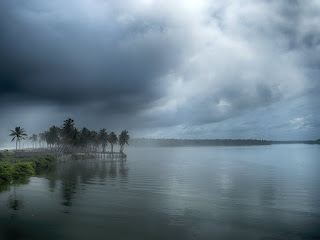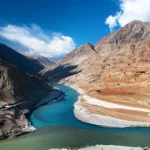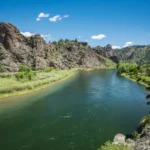
A monsoon, which is a great ocean breeze, occurs when the wind blows from the colder ocean to the much warmer landmass. This seasonal weather pattern is the result of changes in the circulation of the atmosphere and precipitation resulting from the warming of both. The land and the sea. Although most people associate monsoons with rain, they can also include periods of drought. The Asia-Australian and West African monsoons are the main monsoon systems, while there are also North and South American monsoons. Depending on the location, a monsoon may not change the weather significantly, while in some cases it can turn a desert into a lush green prairie. Monsoon doesn’t mean rain, although many people believe that is what it means. They are simply strong breezes that blow from cold to warm environments.
1. It is estimated that there are approximately 500,000 lightning strikes during a monsoon.
2. Arizona receives 31.5% of its total annual rainfall during a monsoon.
3. The word monsoon is believed to be derived from the Arabic word ‘mausim’. Mausim means a shift in wind or season.
4. In Arizona, during the monsoon season, it is also common to see a wall of dust that reaches hundreds of feet in the air.
5. In many parts of the world, life itself depends on the monsoon rains. When the monsoon does not occur in these areas, it can result in widespread famine, and death of both animals and humans.
6. In the US, New Mexico, Southwest Texas, and Arizona are all regions with a monsoon season from June 15th to September 30th every year.
7. India experiences the most dramatic monsoons in the world.
8. In Europe they call the monsoon system they experience the ‘Return of the Westerlies’.
9. A monsoon storm can range from a violent thunderstorm to only small dust storms.
10. The monsoon of western Sub-Saharan Africa is the result of the seasonal shifts of the Intertropical Convergence Zone and the great seasonal temperature and humidity differences between the Sahara and the equatorial Atlantic Ocean..
11. In India, during monsoon season, it is common to see a mouse on the back of frog. They do this to escape the floodwaters.
12. In the United States, Southwest Texas, New Mexico and Arizona are all part of a monsoon season from June 15th to September 30th each year.
13. During a monsoon there are weather hazards that people should be aware of including downburst winds, lightning, dust storms, thunderstorms, wildfires, extreme heat and flash floods.
14. The Asian monsoons may be classified into a few sub-systems, such as the Indian Subcontinental Monsoon which affects the Indian subcontinent and surrounding regions including Nepal, and the East Asian Monsoon which affects southern China, Taiwan, Korea and parts of Japan.
15. In Arizona, during the monsoon, it is not uncommon to see a wall of dust that reaches hundreds of feet in the air.
16. Most of India’s rain falls during the monsoon. Because of the fact that approximately only 33% of India’s crops are grown on irrigated land, without the rain from the monsoon, many farmers’ incomes would be wiped out.
17. Flash floods can occur during the monsoon season, so if your home is situated in a flood-prone area, it is always best to have an evacuation plan in place.
18. In 2002 and 2004 the India Meteorological Department failed to predict the droughts that occurred. Since 1886, when the very first India monsoon forecast was made, there have only been 23 drought years in India.
19. In India they have insurance for farmers to cover uncertain weather.
20. Approximately 70% of people in India are dependent on farming either indirectly or directly. That means the lives of 70% of people in India are financially tied to the monsoon.
21. The 2005 monsoon in India was so strong that more than 1,100 people were killed.
22. A monsoon always blows from a cold region to a warm region.
Monsoon FAQs: Unveiling the Mystery of the Seasonal Winds
Monsoons are a fascinating weather phenomenon characterized by a seasonal reversal in wind patterns, bringing dramatic shifts in rainfall. Here’s a breakdown of some of the most frequently asked questions about monsoons:
1. What is a monsoon?
A monsoon is a seasonal change in the prevailing winds of a region. These winds typically blow from cool, high-pressure areas towards warm, low-pressure areas. In summer, the land heats up much faster than the ocean, creating a low-pressure system over land. This draws in moist, cool air from the ocean, resulting in heavy rainfall. In winter, the opposite happens, with the land becoming cooler and high-pressure, leading to drier conditions.
2. Where do monsoons occur?
Monsoons are most prevalent in tropical and subtropical regions, particularly in:
- South and Southeast Asia (India, Pakistan, Bangladesh, Myanmar)
- East Asia (China, Japan)
- West Africa
- Northern Australia
3. What are the different types of monsoons?
There are two main types of monsoons:
- Summer monsoons: These bring heavy rainfall during the summer months. They are the most common type and are responsible for much of the rain received in monsoon regions.
- Winter monsoons: These bring drier and cooler conditions during the winter months.
4. What are the impacts of monsoons?
Monsoons have a profound impact on the regions they influence:
- Agriculture: Monsoon rains are crucial for agriculture in many parts of the world. A good monsoon season can lead to abundant harvests, while a weak or erratic monsoon can cause droughts and food shortages.
- Hydropower: Monsoon rains are a vital source of water for hydroelectric power generation.
- Flooding: Heavy monsoon rains can sometimes lead to devastating floods, displacing people and causing damage to infrastructure.
- Ecosystems: Monsoon rains play a vital role in supporting ecosystems, both terrestrial and aquatic.
5. How can monsoons be predicted?
Predicting monsoons is a complex task, but scientists use various methods:
- El Niño and La Niña: These global ocean-atmosphere phenomena can significantly influence monsoon patterns.
- Atmospheric and oceanic data: Monitoring factors like sea surface temperature, atmospheric pressure, and wind patterns can help predict monsoon behavior.
- Climate models: Sophisticated computer models are used to simulate monsoon systems and predict their behavior.
6. How is climate change affecting monsoons?
Climate change is a major threat to monsoon predictability. Rising global temperatures can disrupt the delicate balance between land and ocean temperatures, leading to more erratic and extreme weather patterns. This can cause stronger monsoons with intense rainfall, followed by longer droughts.
7. How can we adapt to the challenges of monsoons?
Several strategies can help communities adapt to the challenges of monsoons:
- Improved water management: Building reservoirs and improving irrigation systems can help store excess water during the monsoon season and use it during drier periods.
- Flood control measures: Strengthening levees, improving drainage systems, and planting trees can help mitigate the risks of flooding.
- Drought-resistant crops: Developing and adopting drought-resistant crop varieties can help ensure food security in case of weak monsoon seasons.
8. Fun fact: Did you know the word “monsoon” comes from the Arabic word “mawsim,” meaning “season”?
Hopefully, this FAQ provides a deeper understanding of monsoons, their impact on various regions, and the challenges and opportunities they present in a changing climate. Monsoons are not just a weather phenomenon; they are a vital force shaping cultures, economies, and ecosystems around the world.









